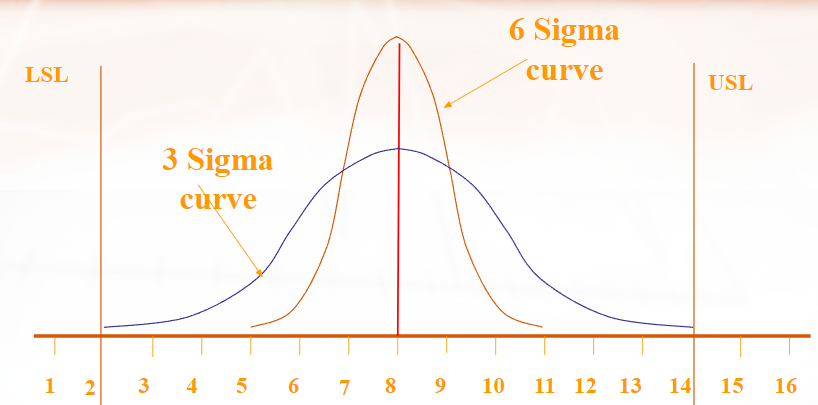Six Sigma(6σ): Process Perfection
-
Introduction to six sigma
Let us first understand what is six sigma, 6σ is Way of systematically improving processes by eliminating defects or in other words we can say that “Six Sigma” refers to the notion that if you have six standard deviations between the mean and the nearest specification limit, practically nothing will exceed the limits. It was initiated by Bill Smith at Motorola in 1986. Six Sigma is a data-based methodology to improve performance by reducing variability. It requires thorough understanding of product and process knowledge and is completely driven by customer expectations. In other words, it is a methodology to achieve 3.4 defects per million opportunities. It can also be used to bring breakthrough improvements in the process. It focuses on the bottom-line and is a proven methodology for problem solving.
-
Understanding Six sigma through graph

Sigma or standard deviation is a statistical measure of dispersion in data. It is a measure which uses the characteristic of past data to make judgements about how the process will perform in the future. If a given set of data has normal probability distribution, then the number of defects that will occur in the process over a period of time can be known depending upon the sigma level of the process. In a 3 sigma process the values are widely spread along the centre line, showing the higher variation of the process. Whereas in a 6 Sigma process, the values are closer to the centre line showing less variation in the process. Lesser the standard deviation of the process, more precise or consistent is the process. Below is the number of defects which based on the sigma level of any process.
| Sigma Level | Defects per Million | Defect Percentage |
| 1 | 691462 | 69% |
| 2 | 308538 | 31% |
| 3 | 66807 | 6.7% |
| 4 | 6210 | 0.62% |
| 5 | 233 | 0.0235 |
| 6 | 3.4 | 0.00034% |
-
Methodology of Six Sigma
The two main Six Sigma methodologies are DMAIC and DMADV. Each has its own set of recommended procedures to be implemented for business transformation. DMAIC is a data-driven method used to improve existing products or services for better customer satisfaction. DMAIC is applied in the manufacturing of a product or delivery of a service is a part of the Design for Six Sigma (DFSS) process used to design or re-design different processes of product manufacturing or service delivery. The five phases of DMAIC & DMADV are

-
The Six Sigma Equation
Y = f(x)
The simple looking equation mentioned above can be described as the crux of the Six sigma philosophy. The component parts of the equation are as follows:
- Y = Outputs also known as Dependant Variables
- X = Inputs also known as independent Variables
- F = Function
What the equation is actually saying is that the outputs we receive are the function of the inputs that we give to our process. Hence if we were able to control the inputs with precision, the outputs would also be controlled in a precise manner
-
Benefits of Implementing six sigma
1. Reduces Wastage
2. Reduces Inventory Needs
3. Reduces Reworks and Defects
4. Increases Customer Satisfaction
Six Sigma results in massive cost savings to the organization involved. These cost savings are highlighted by the fact that after a Six Sigma project any organization has considerably less requirement for labour hours. Also, the requirement of skilled labourers is also reduced. Hence, both these factors combined have an effect of drastically reducing the labour bill of the organization.
Reference Link
Article by:- Dhaval Gohel

